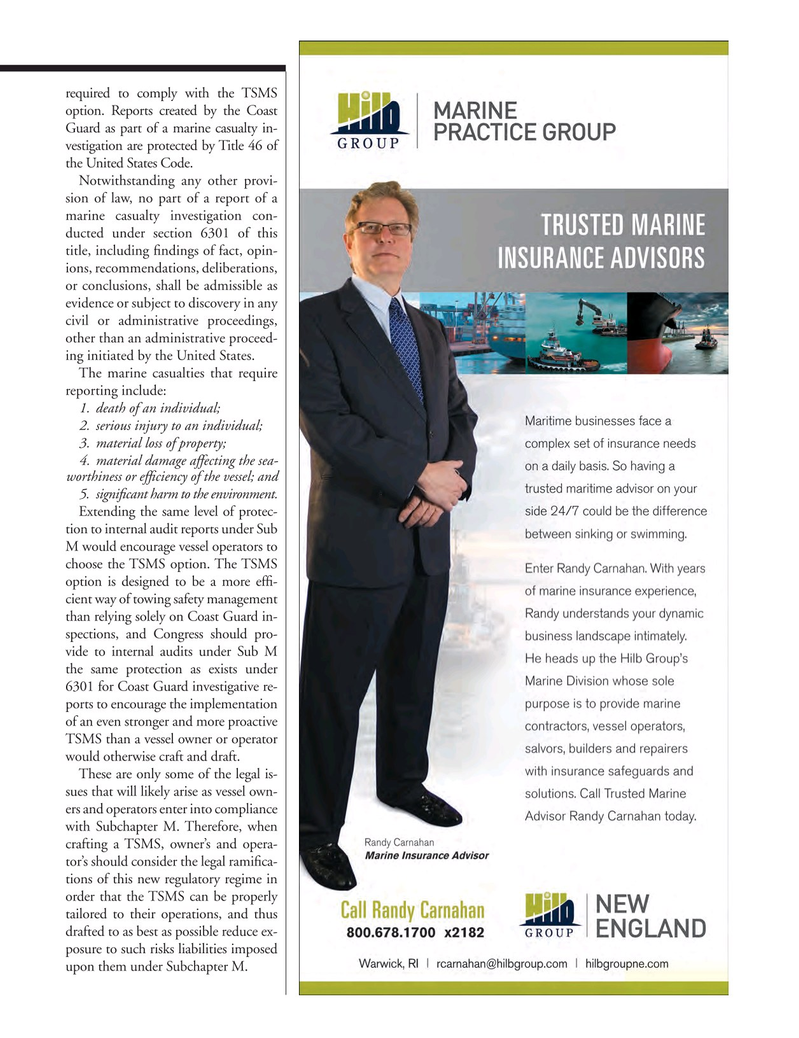
Page 27: of Marine News Magazine (April 2017)
Boatbuilding: Construction & Repair
Read this page in Pdf, Flash or Html5 edition of April 2017 Marine News Magazine
required to comply with the TSMS option. Reports created by the Coast
Guard as part of a marine casualty in- vestigation are protected by Title 46 of the United States Code.
Notwithstanding any other provi- sion of law, no part of a report of a marine casualty investigation con- ducted under section 6301 of this title, including ? ndings of fact, opin- ions, recommendations, deliberations, or conclusions, shall be admissible as evidence or subject to discovery in any civil or administrative proceedings, other than an administrative proceed- ing initiated by the United States.
The marine casualties that require reporting include: 1. death of an individual; 2. serious injury to an individual; 3. material loss of property; 4. material damage affecting the sea- worthiness or ef? ciency of the vessel; and 5. signi? cant harm to the environment.
Extending the same level of protec- tion to internal audit reports under Sub
M would encourage vessel operators to choose the TSMS option. The TSMS option is designed to be a more ef? - cient way of towing safety management than relying solely on Coast Guard in- spections, and Congress should pro- vide to internal audits under Sub M the same protection as exists under 6301 for Coast Guard investigative re- ports to encourage the implementation of an even stronger and more proactive
TSMS than a vessel owner or operator would otherwise craft and draft.
These are only some of the legal is- sues that will likely arise as vessel own- ers and operators enter into compliance with Subchapter M. Therefore, when crafting a TSMS, owner’s and opera- tor’s should consider the legal rami? ca- tions of this new regulatory regime in order that the TSMS can be properly tailored to their operations, and thus drafted to as best as possible reduce ex- posure to such risks liabilities imposed upon them under Subchapter M.

 26
26

 28
28
